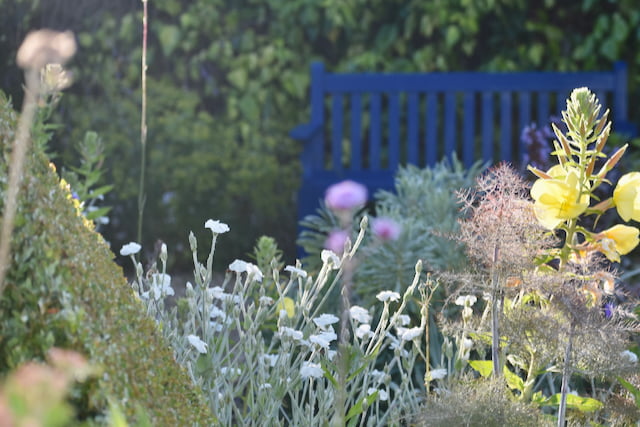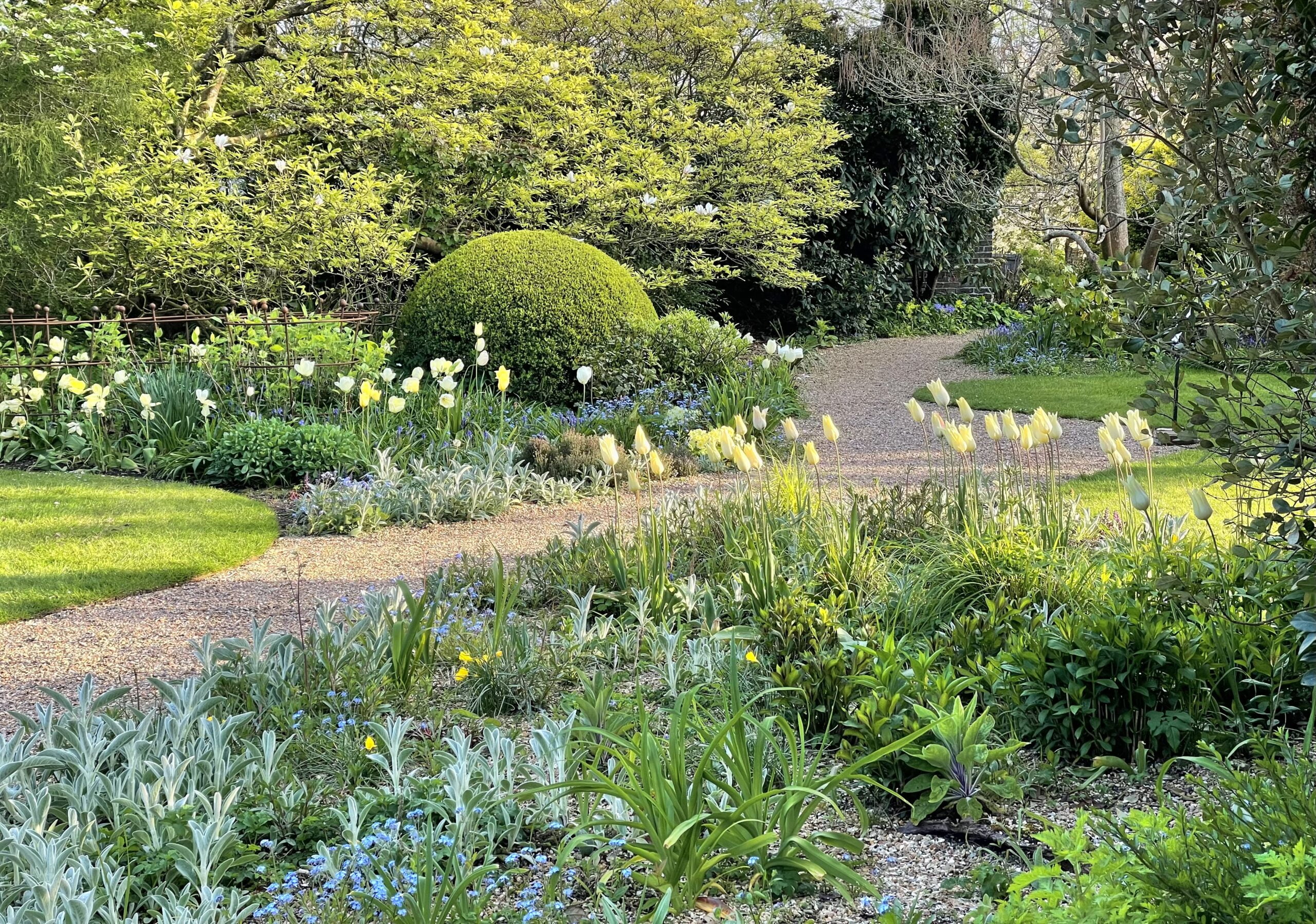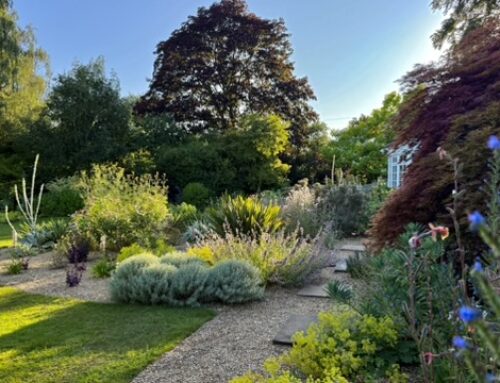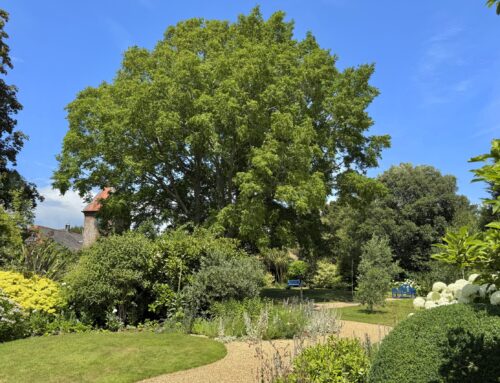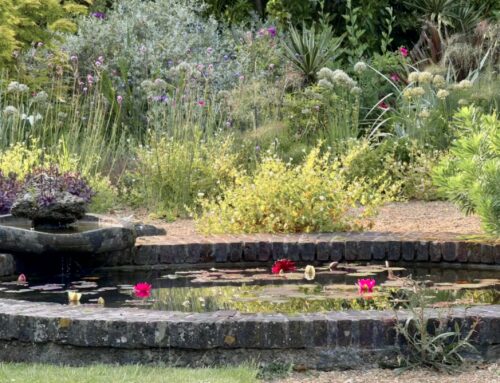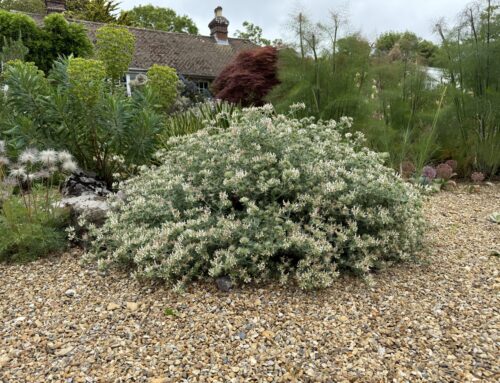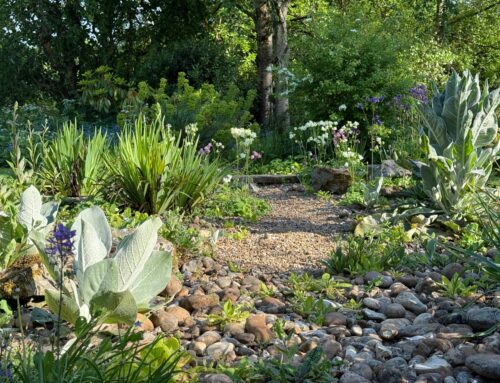In December of 2017, when a bitter business dispute was finally settled, John Brookes was in full control of his garden for the first time in years. As a result of the long running dispute the garden was in a terribly neglected state, which had saddened and frustrated John. Quite understandably, he was determined to put it back to rights.
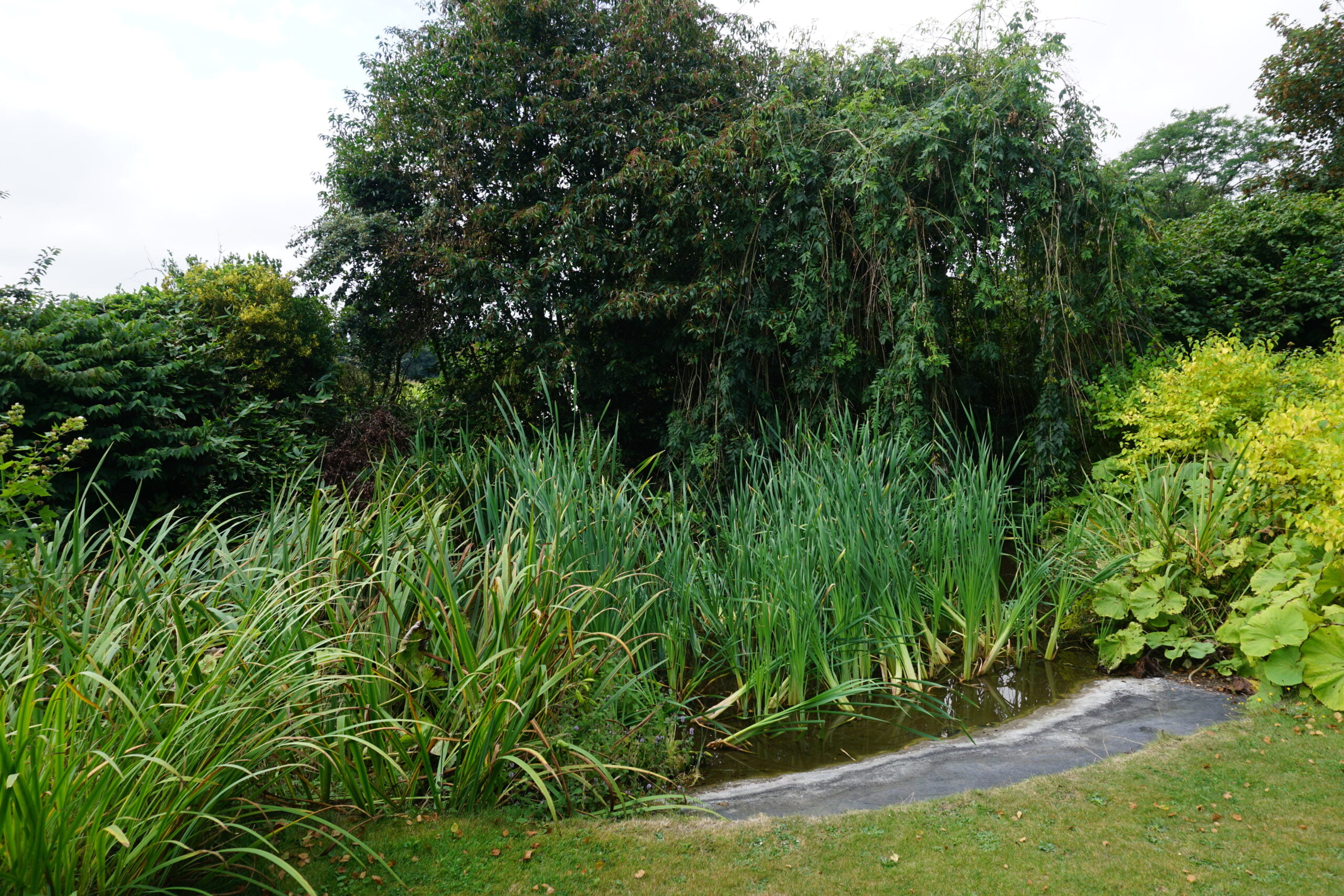
Above: The pond in 2016. Right: The pond in May 2023.
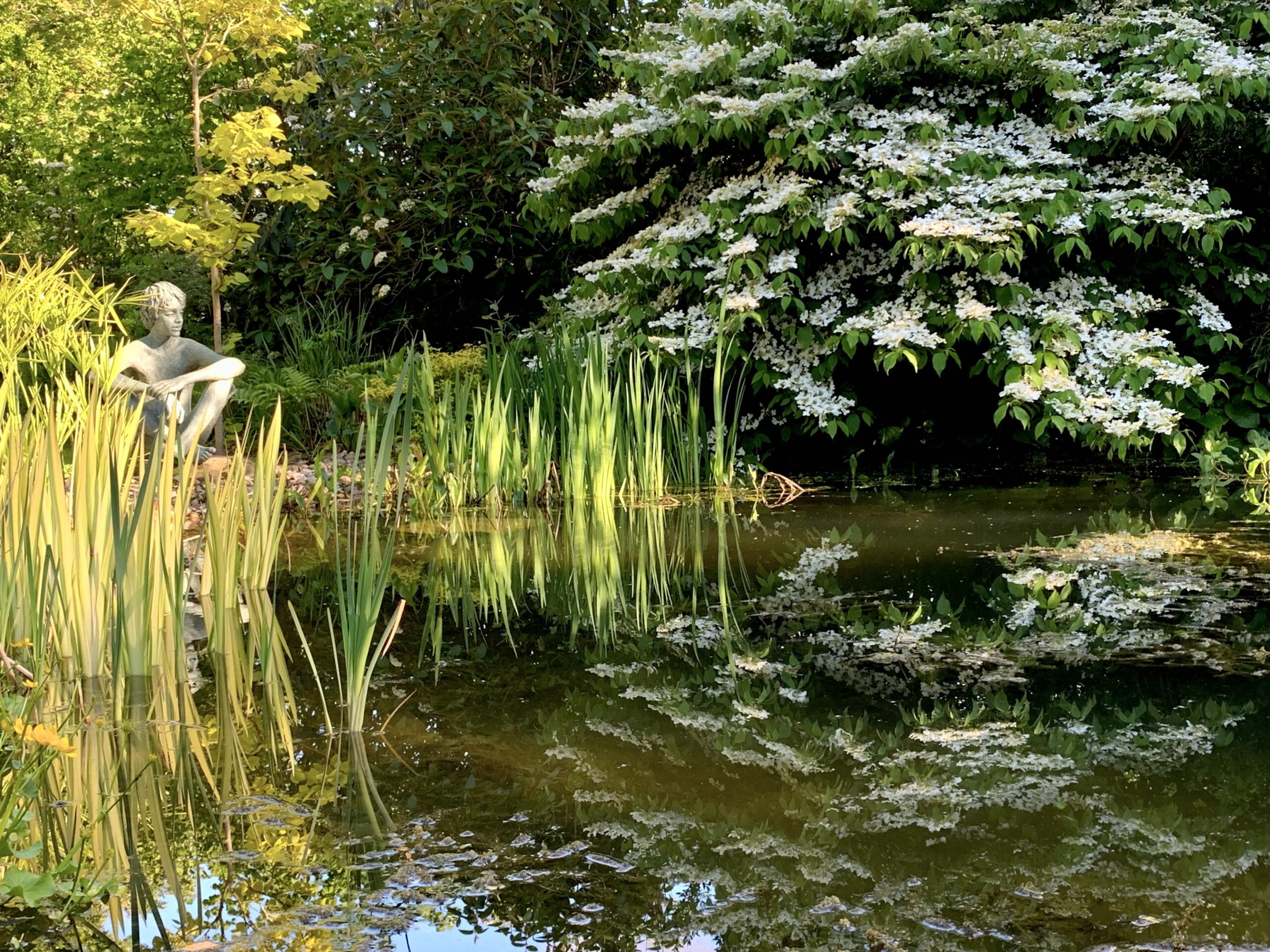
Although the bones of the garden and its plants were still here, many still from Mrs. Robinson’s time, it was full of weeds and overgrown trees and shrubs. Fences were dilapidated, the buildings were in a deplorable state, the big Dutch lights greenhouse was impenetrable and collapsing, and the lower pond was so full of muck and pond weeds, it seemed to have disappeared.
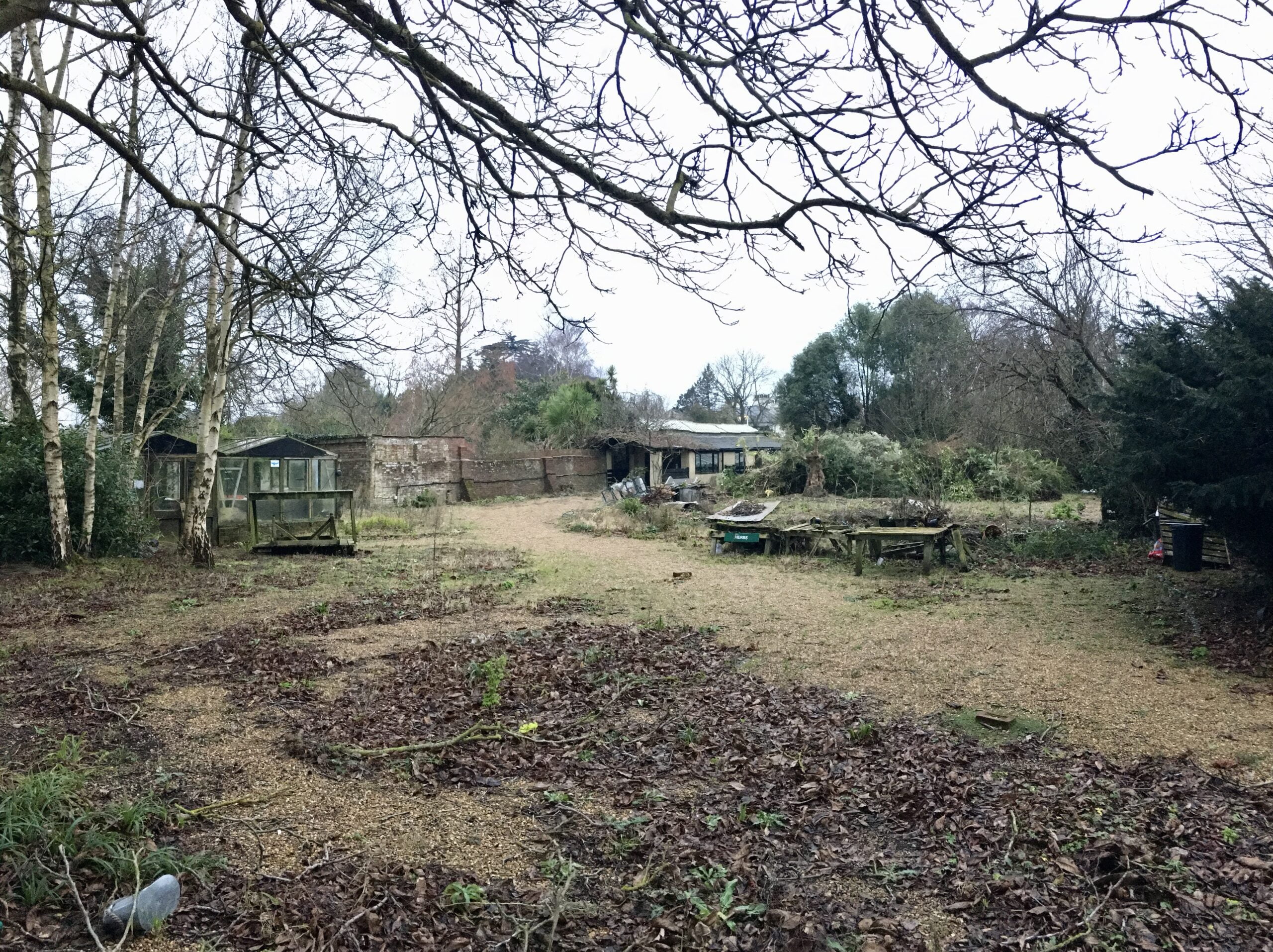
Above: The plant lot in January of 2018. Right: The plant lot now.
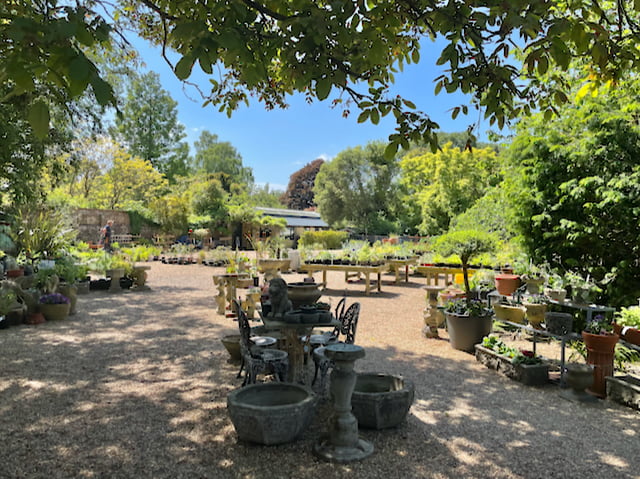
Consequently, the instant he knew the dispute was over John and his head gardener, Graham Best, attacked the garden with a ferocious intensity, even though, at 84, he was growing increasingly frail.
Looking back, it seemed as though he sensed that his time was running out and soon there were mountains of branches, stumps, and rubbish piled up in the drive by the Cottage and at the entrance to the Walled Garden.
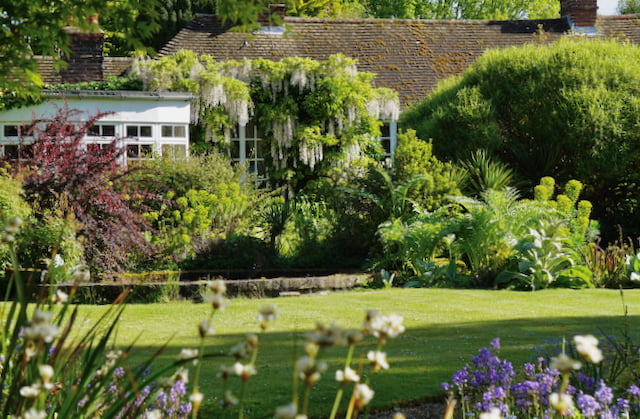
Above: The Cottage in 2017 before John had the overgrown plants and weeds removed. Below: The Cottage in 2023 with the restored gravel garden.
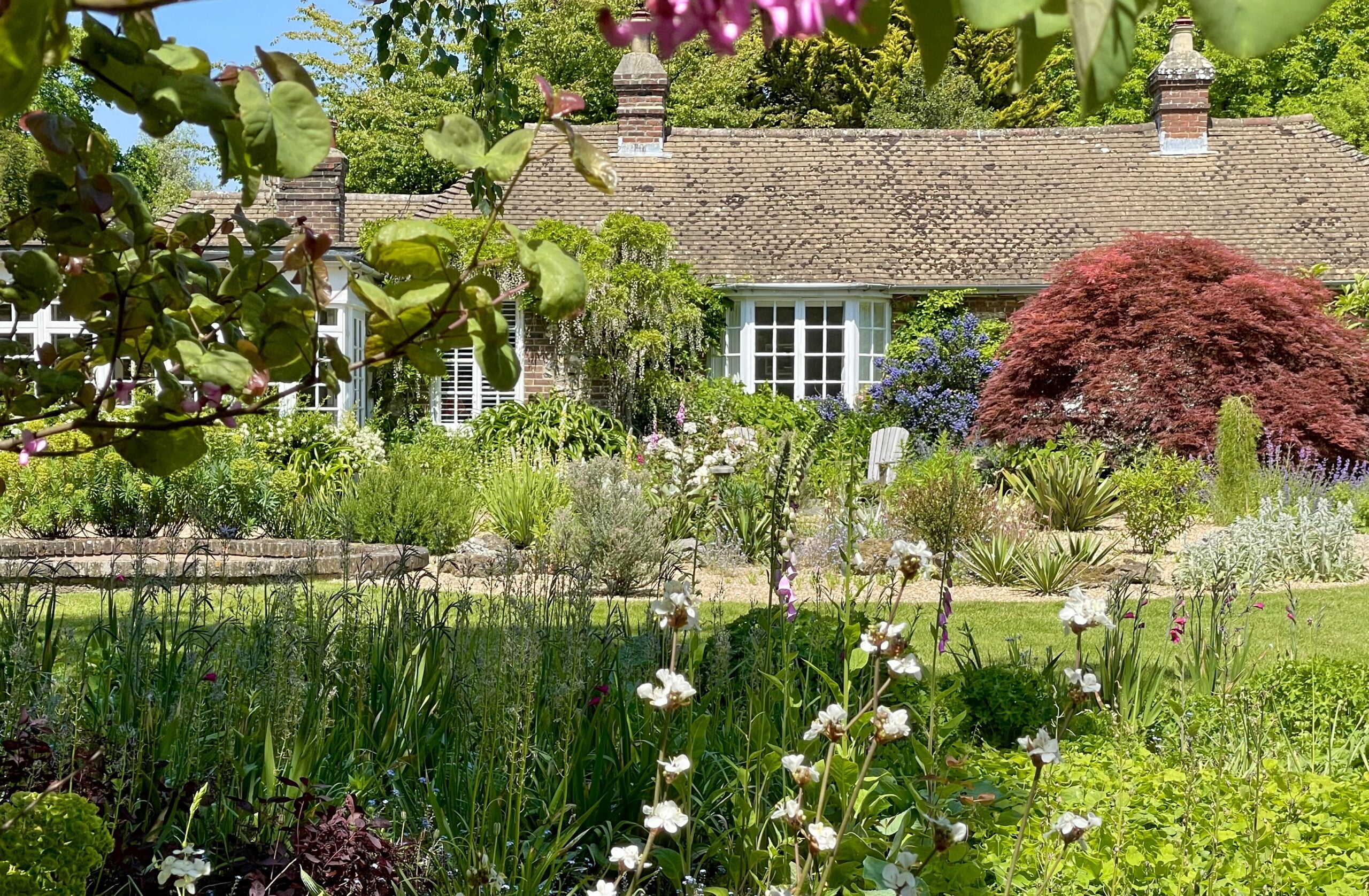
When we finally received the keys to the various buildings, we were shocked by the terrible condition they were in, from the Cottage where Joyce Robinson had lived to the Dairy where the restaurant had been, and everything in between. Ceilings were falling in, pipes were leaking, the public loos were filthy, and rubbish was everywhere.
As John wanted to move from Clock House into the Cottage we began renovations there immediately, starting with major roof repairs and rewiring while he continued his ‘scorched earth’ clean-up of the garden.
Nothing was sacred – not even the 25-foot golden holly near the pond escaped the axe. We were horrified but once it was gone and the view had been opened, it was obvious that, of course, he was right. As he always smugly reminded me, he was, after all, ‘the designer’.
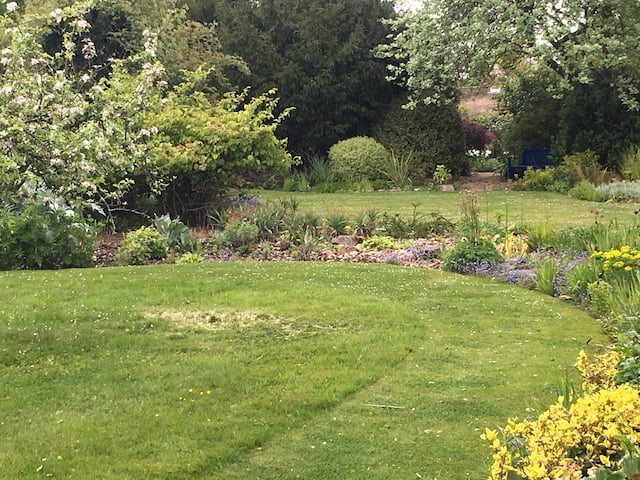
Above: The view up the West Riverbed in 2018. Right: The view of the West Riverbed in May 2023.
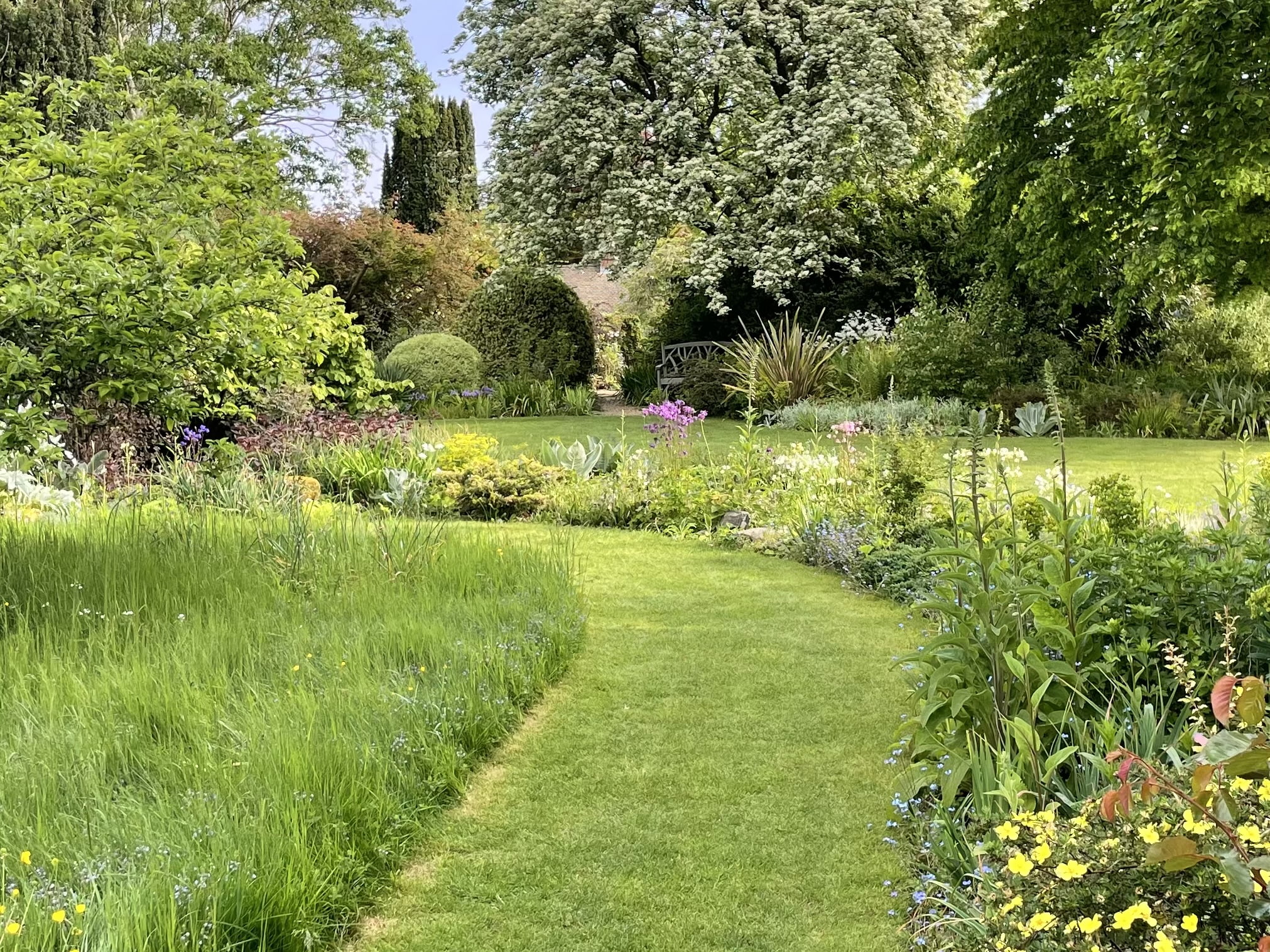
John was unsentimental about plants so though the rest of us cringed, when all was said and done, he was always right about which plants needed to be removed because of a missed view or because they were out of proportion. We try to keep this in mind.
We were heartbroken when John died in March that year. We had lost our friend, colleague, and mentor. He died without leaving us a road map for the future. His archives were not in order and neither were his photos.
And, we were faced with the daunting task of re-opening the garden, which had been closed for over a year.
Bereft but determined, we continued to clean up Denmans, getting rid of weeds – acres, it seemed of ground elder — and cutting back what was obviously overgrown. Among other things, we also managed to restore the lower pond, finish rewiring the Cottage, and replace the roof of the restaurant.
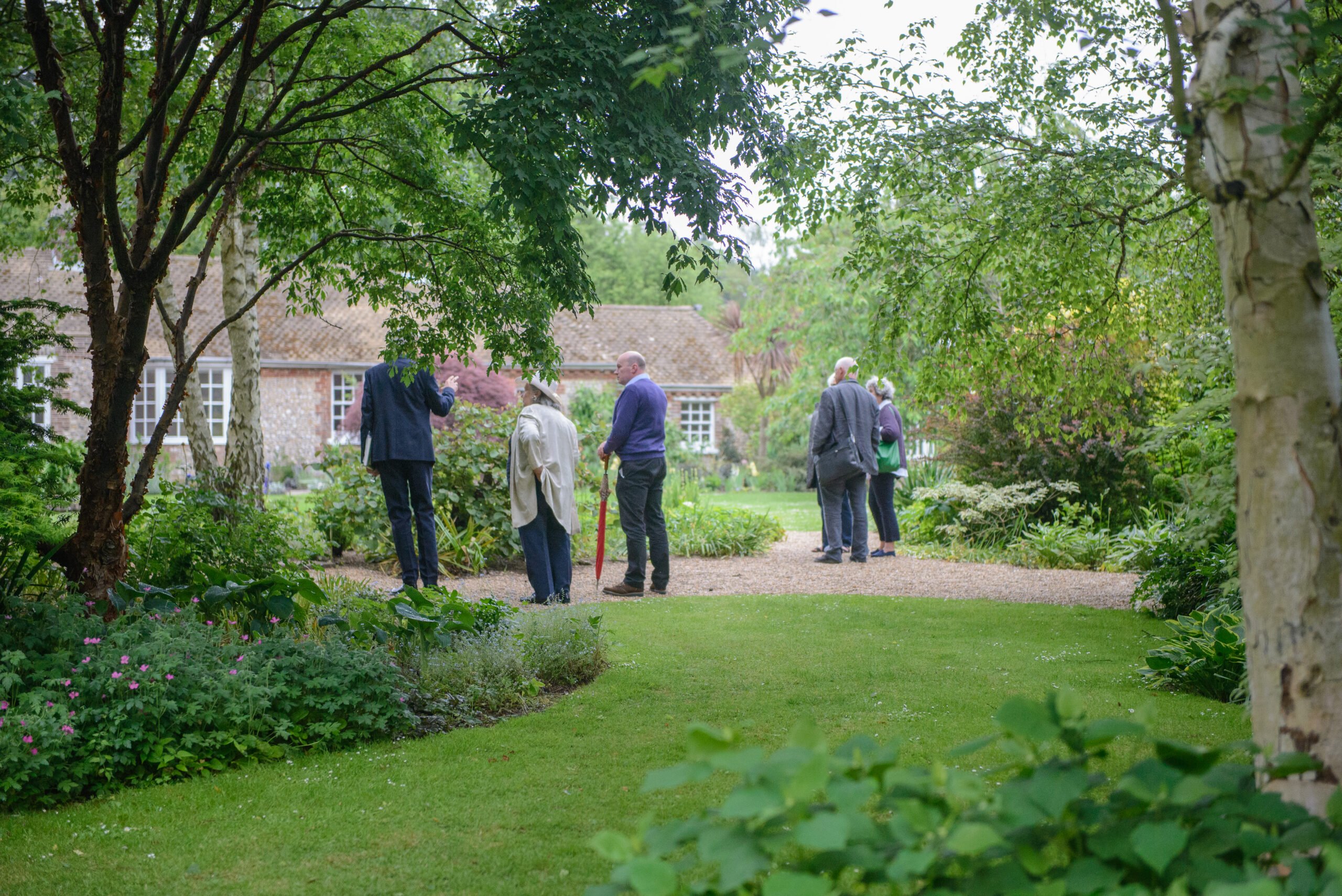
Above and left: Among those touring the garden after John’s memorial in 2018 were Andy Sturgeon, Christopher Woodward, Chris Young, and Rosemary Alexander.
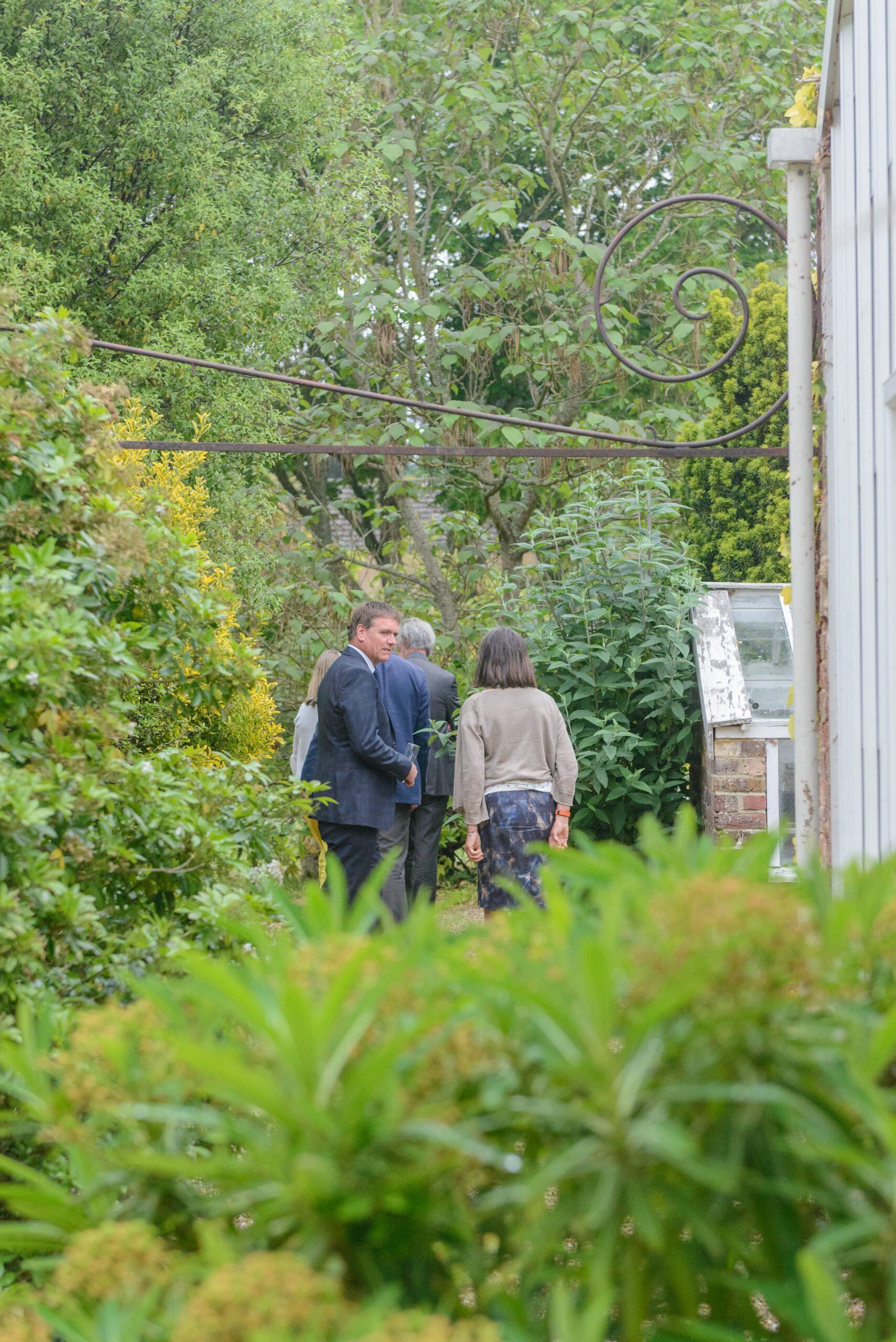
Somehow, by 2 June 2018, a few days after John’s memorial, we re-opened the garden to the public. The garden was far from impeccable, but it was presentable and looked indisputably as though it had a future again – far from the neglected garden it had been only 6 months earlier.
Since 2019, after the worst of the mess had been cleaned up, we have taken a more reflective and deliberative approach to restoring the garden that often requires consulting old photos, Mrs. Robinson’s writings, old articles, John’s books, and memories shared by those who knew the garden ‘back in the day’ for guidance.
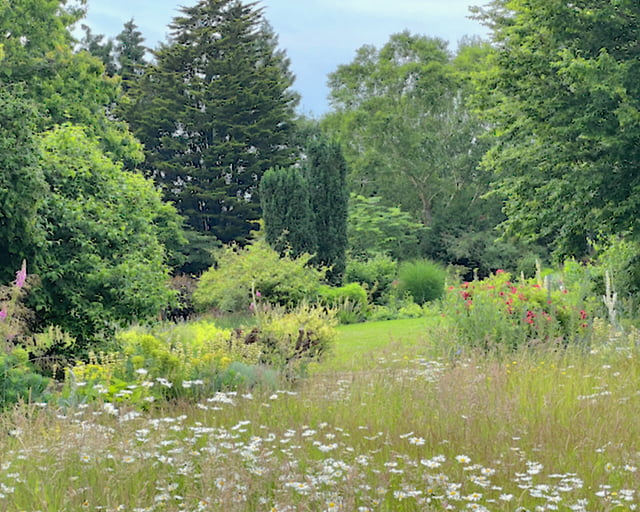
John planted the daisies, a gift from his friend Jenny Hook, in the meadow in the 1980s.
We are still learning about the garden and its history. It was only last summer that we discovered that the ox-eye daisies growing in the meadow were given to John by his good friend, Jenny Hook, and earlier this spring that we learned that Mrs. Robinson started using the Dutch lights greenhouse for her tender plants once she began relying on her iconic golf buggy to move through the garden.
We are very fortunate to have been given writings and photos by Mrs. Robinson’s family and we are grateful to the large number of people who have come in and have shared stories with
us – and those who have not come in but who have sent old photos by email.
We were also lucky to have found a couple of drawings of the gardens among John’s papers. There are very few because, as he used to say, Denmans was where he pursued his hobby – gardening – and not where he designed.
One of the delightful surprises resulting from cutting back so many overgrown areas is that we have discovered plants we had never seen before.
The first were snowdrops. John didn’t like snowdrops and there were none. There were none, that is, until after he died in 2018, when snowdrops appeared near Clock House and by the pond. Since then, they have been coming up in the Nut Walk, around the Cottage, and in other areas. Many other bulbs like Leucojum, daffs, hyacinths, and bluebells have also appeared in places we didn’t know they existed. They are now naturalizing so there are more each year.
We have also discovered roses, mahonias, viburnums, vines, and any number of other plants and perennials that were covered up by overgrown shrubs and trees. We even discovered a terrestrial orchid growing in the gravel by the Cottage.
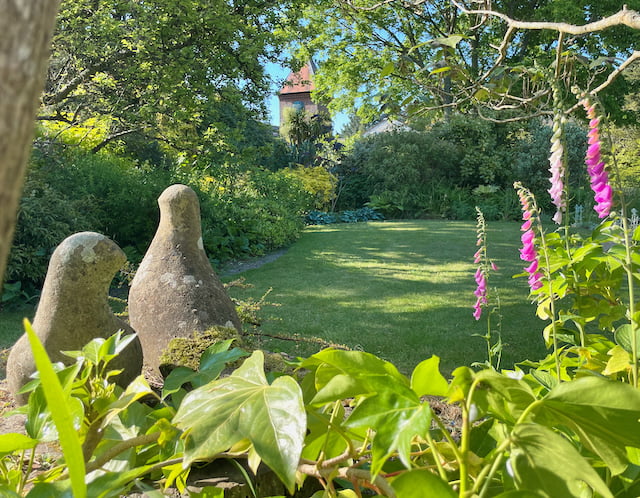
Clock House on a late May evening in 2023.
Our restoration projects, which began with the restoration of the lower pond in 2018 (relying on a rare drawing we discovered after John died), have included the restoration of the Walled Garden, the Clock House Garden, the Nut Walk, and the gravel garden and pond in front of the Cottage.
In addition to the written, photographic, and oral material we rely on to guide, we always strive to ensure that we work in the spirit of what Mrs. J.H. and John created together with an eye towards sustainability in the face of climate change and biodiversity – both subjects that John wrote about, and she would have had in mind.
Some might ask why Denmans is important and why we are working so hard to restore it. It’s only 5 acres, has no grand house, and, in fact, is not grand at all.
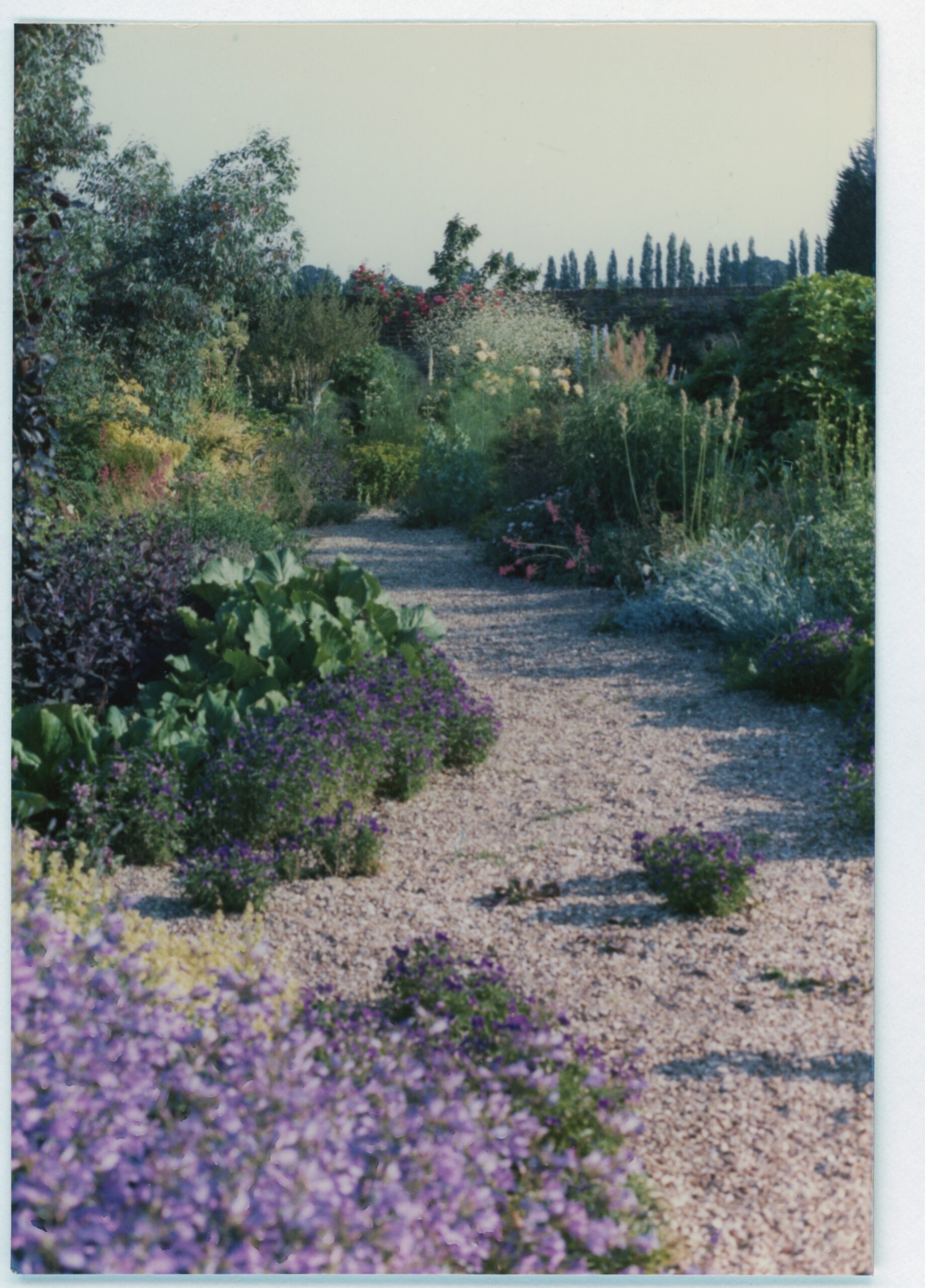
Above:Mrs. Robinson’s made her first gravel garden in the Walled Garden in 1970. Here it is shown in 1979, the year before John Brookes moved to Denmans. Right: The gravel garden in the Walled Garden in the summer of 2023.
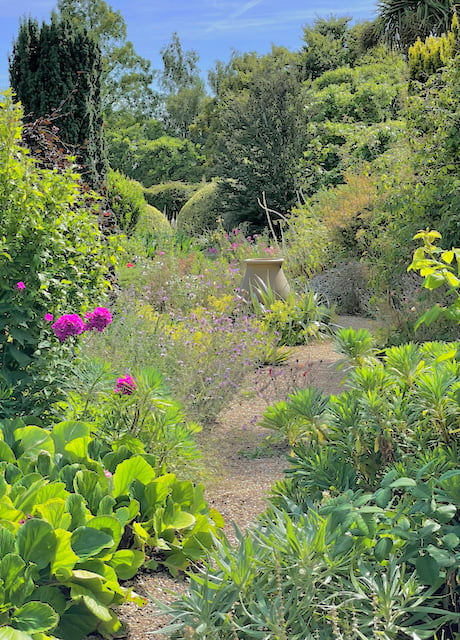
One reason is that it’s well-established gravel gardens and faux dry riverbeds are now over 50 years old, having been started by Mrs. Robinson in 1970, an accomplished horticulturalist and a pioneer in gravel gardening. It is also where John Brookes lived, started his Clock House School of Garden Design, and worked from 1980 to 2018. Over time, as he said, he fused his style with hers.
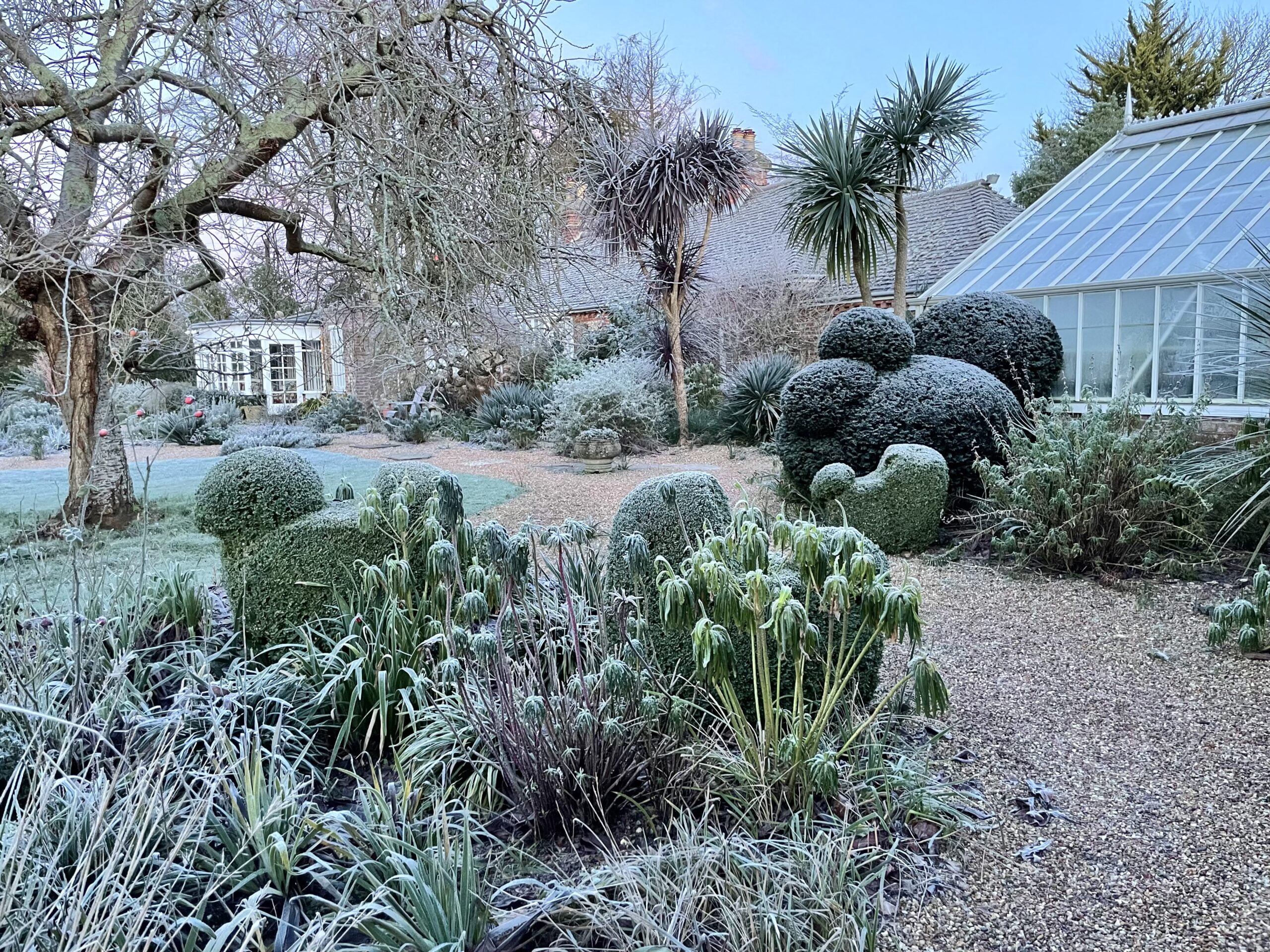
Denmans is as beautiful in winter as it is in summer.
Moreover, Denmans is where plantsman and designer have common ground — where the layout and the purpose of the garden blend with the plantings in a single harmonious “whole” every month of the year. The two don’t fight — they work together — the strong structure and elements of the garden serve to relate house to garden, purpose to garden, style to garden — and then is overlaid with exuberant, diverse, and strong plantings.
Mrs. Robinson referred to her garden – and implicitly her style – as glorious disarray (the title of her 1989 book about Denmans), though, as John emphatically wrote, it was highly structured. He suggested that his changes moved the garden to ‘controlled disarray’.
As such, Denmans embodies design and plants(wo)manship at their combined best and remains timeless.
The hard work since 2018 has paid off in many ways. Today we are proud to have been reinstated as an RHS Partner Garden and to have been voted RHS ‘Partner Garden of the Year’ for the South and South East. Among our other accomplishments, we have won gold two years in a row in the South and Southeast competitions and have re-opened to the National Garden Scheme, a tradition that dates back to 1967. In 2020, Denmans was also one of 20 post-war gardens that was registered Grade II. We have collaborated with the London College of Garden Design and Garden Masterclass, and have hosted students from the Inchbald School of Garden Design and English Garden School. We have started a volunteer program (thank heavens for volunteers!) and have our second artist-in-residence this year.
So the five years have been about far more than the rejuvenation and restoration of this extraordinary garden. They have also been about wonderful staff, fantastic volunteers, enthusiastic and appreciative visitors, artists and designers, and supportive friends and family – the building of a community that understands Denmans’ significance.
One can’t say what the future holds, but suffice it to say, there is still much to do. As I always say, our work at Denmans is part archeology, part very hard work, and part magic. Watch this space!
